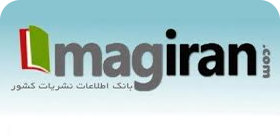The Providing a model for improving the Physiological Performance of Human Resources, based on the Biorhythm Cycle in Educational - Therapeutic Centers
Keywords:
Human Resources, Physiological Function, Biorhythm Cycle, Educational-Medical CentersAbstract
Purpose: The purpose of this study is to design a model to improve the physiological performance of human resources, based on the biorhythm cycle in educational and medical centers. Methodology: the combined research method is based on exploratory mixed research (qualitative - quantitative). Statistical population in the qualitative section of a group of experts including professors in the field of organizational behavior management in universities and higher education centers, Vice Chancellor for Management Development and Resources of Medical Universities and experts on physiological performance and biorhythm cycle and in the quantitative section; The staff in rotation of Imam Khomeini Educational and Medical Center in Sari consisted of 820 nurses, midwives, paramedics, services, laboratory and radiology; In the qualitative part, using the snowball method to achieve theoretical saturation, in-depth interviews were conducted with 20 experts, and in the quantitative part, to measure the model, a researcher-made questionnaire with relative class sampling method was used among 264 people. was distributed. To determine the validity and reliability in the qualitative stage, the necessary tests, including acceptability and capability, are used, and in the quantitative stage, the validity of the 74-item questionnaire by face and content method (CVR and CVI range for items between 0.6 to 0.1, 0.85 and 0.1, respectively) and its reliability by Cronbach's alpha method by 83% of the cases Confirmed. Data were analyzed in qualitative stage with grounded theory technique with MAXqda2018 software and in quantitative stage with structural equations (heuristic and confirmatory factor analysis) with SPSS and AMOS software. Finding: The results of the qualitative part indicate that the physiological performance model of human resources, based on the biorhythm cycle has 16 dimensions in terms of causal conditions (working conditions, demographic characteristics and individual conditions), contextual conditions (organizational structure, motivation of managers and employees and intelligence Ethical), intervention conditions (culture building, teamwork and organizational and non-organizational challenges), strategy (training and awareness, biorhythm cycle planning and performance management) and outcome (job performance improvement, physiological performance of human resources and improvement Organizational performance) has been. Conclusion: The results of the quantitative section showed that all dimensions of the research model were confirmed.
















